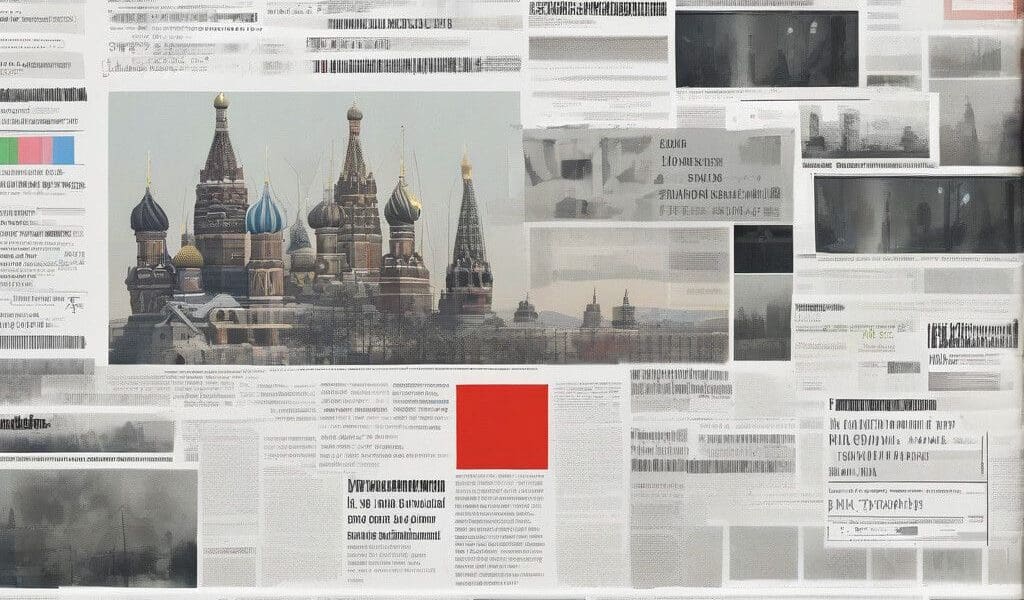Russia to Invest $660 Million in Modernizing Internet Censorship
In a bold move reflecting its commitment to online control, Russia has announced an investment of nearly 60 billion roubles—equivalent to about $660 million—over the next five years to modernize its internet censorship infrastructure. The state regulator, Roskomnadzor, which plays a pivotal role in shaping the digital landscape within the country, will oversee the enhancement of its censorship system known as TSPU (System for the Protection of the Russian Segment of the Internet).
The TSPU was initiated following a law enacted in 2019 requiring internet service providers to install equipment dictated by the government. These measures have enabled the state to monitor and control web traffic, creating a tightly regulated online environment. With over 6,000 TSPU devices already deployed, the additional funding aims to acquire advanced software and hardware. This upgrade is crucial in enhancing the system’s capacity to filter and block content deemed harmful or illegal by the government, particularly targeting attempted access to independent media through VPNs.
The backdrop of this investment is equally significant. Since Russia’s invasion of Ukraine in 2022, the government has intensified its crackdown on digital freedoms, implementing stringent measures against independent voices and social media platforms. This has included blocking various websites and curbing the use of Virtual Private Networks, with Roskomnadzor continuously tightening its grip on these essential tools that many citizens rely on to access uncensored information.
Critics, including digital rights advocates from organizations such as Roskomsvoboda, express serious concerns over what they perceive as a blatant affront to free speech. They argue that despite the Kremlin’s justification framed around national security, the overarching impact of these investments is likely to stifle dissent and suppress independent thought. In an environment of increasing censorship, innovation in circumvention tools—particularly VPNs—remains an ongoing battle.
Developers of these VPN services remain undeterred, highlighting that while state resources pour into repressive technologies, the demand for uncensored access is surging. This persistence suggests a broader struggle that resonates well beyond Russian borders, reflecting a global tension between government control and the quest for digital freedoms. Numerous VPN developers are already working on more resilient systems to counteract government measures, proving that the spirit of innovation often finds a way, even in constrained environments.
One might ask why this issue is of paramount importance. As the Russian government continues to expand the boundaries of its censorship apparatus, it sets a dangerous precedent that could inspire similar actions in other nations. The capability to enforce comprehensive internet control raises alarms regarding civil liberties and the fundamental right to information. In a digital age where information flows swiftly and freely, such concentrated power could have chilling consequences on global freedom of expression.
Moreover, the implications extend into the realm of international relations. The Kremlin considers its actions as part of a broader strategy to combat what it terms “Western information warfare.” This rhetoric not only shapes internal policy but also informs Russia’s foreign relations, underlining a narrative of victimhood against perceived external threats. As the narrative persists, it complicates diplomatic efforts, particularly with Western nations that prioritize individual freedoms and democratic norms.
In conclusion, the substantial investment in modernizing internet censorship reflects a strategic pivot for the Russian government amidst escalating geopolitical tensions. As the state fortifies its ability to control the digital narrative, the ensuing conflict between government censorship and technological innovation illustrates a crucial battleground for civil liberties. The ongoing efforts from both sides hint that this tug-of-war over digital expression will continue to evolve, with both technical developments and legislative actions at the forefront of the struggle for digital freedom.








